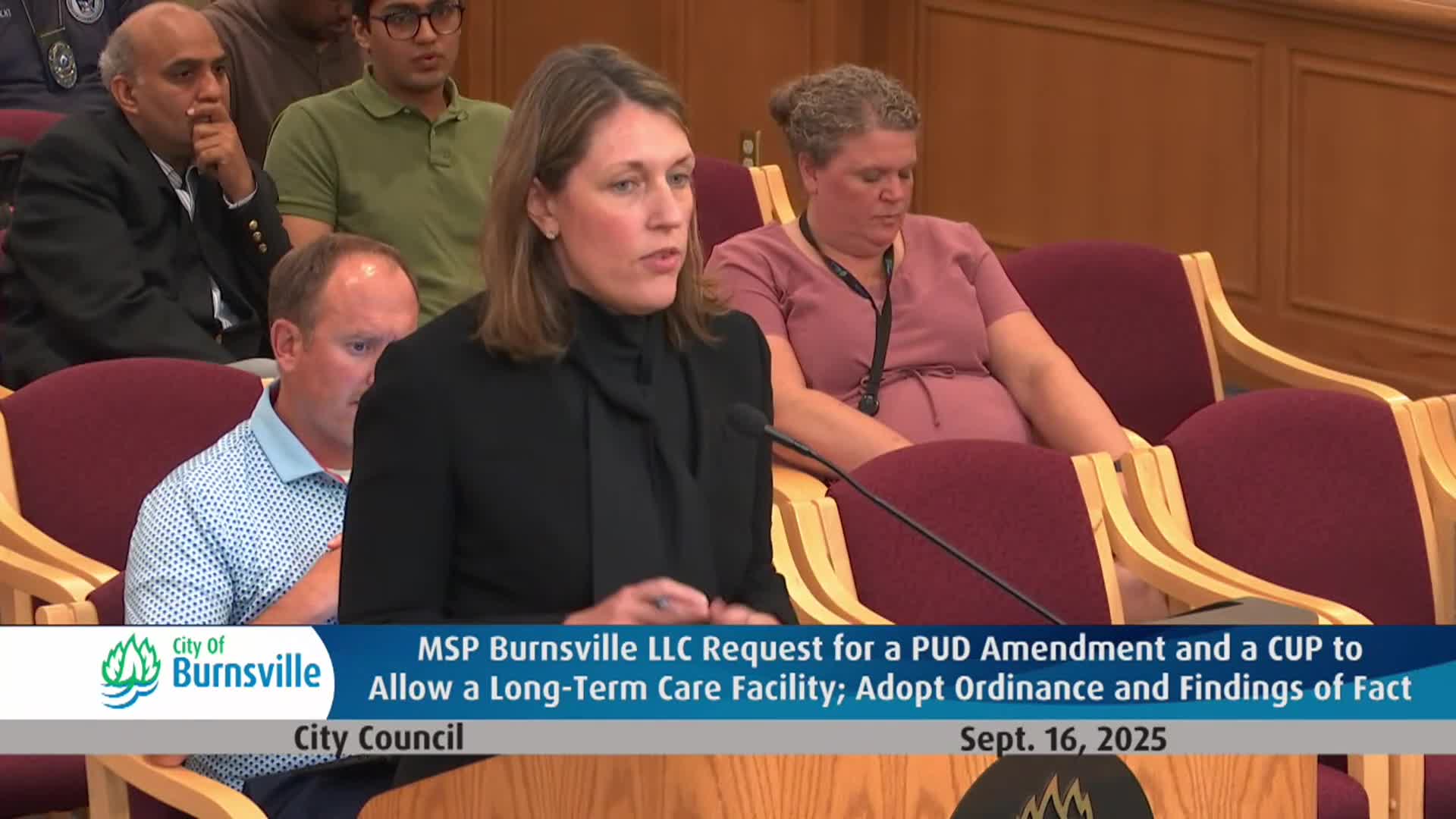City Council Considers 30-Day Extension for Facility's Proposal Review
September 17, 2025 | Burnsville, Dakota County, Minnesota
This article was created by AI summarizing key points discussed. AI makes mistakes, so for full details and context, please refer to the video of the full meeting. Please report any errors so we can fix them. Report an error »

In the heart of Burnsville's city hall, council members gathered on September 16, 2025, to deliberate on a significant proposal that could reshape local services and community dynamics. The atmosphere was charged with anticipation as discussions unfolded around a new facility seeking to expand its capacity, raising questions about community impact and operational integrity.
At the center of the debate was a proposal to increase the number of beds at a local facility, which currently operates at 104 beds. Council member Schultz expressed a generally supportive stance, emphasizing property rights and the importance of allowing business owners to utilize their properties effectively. However, he acknowledged the concerns raised by fellow council members regarding the potential strain on local emergency services, particularly fire and police, due to increased call volumes.
The council's deliberations took a pivotal turn when the idea of tabling the proposal for one month emerged. This would allow the facility's operators to address outstanding questions and provide clarity on operational scaling and community impact. The operators expressed their willingness to cooperate, indicating a commitment to making the project a "first-class" endeavor.
As the discussion progressed, concerns about the long-term implications of the proposal surfaced. Council members highlighted the need for "guardrails" in the agreement, particularly regarding the property’s future ownership and operational compliance. The fear was that once the proposal was approved, it would run with the land, potentially leading to complications if a new operator took over without adhering to the established conditions.
The council's approach reflects a cautious yet proactive stance, aiming to balance business interests with community welfare. As they prepare to revisit the proposal next month, the council is poised to ensure that any expansion aligns with the needs and safety of Burnsville's residents. The outcome of this deliberation could set a precedent for future developments in the city, making it a critical moment for both local governance and community engagement.
At the center of the debate was a proposal to increase the number of beds at a local facility, which currently operates at 104 beds. Council member Schultz expressed a generally supportive stance, emphasizing property rights and the importance of allowing business owners to utilize their properties effectively. However, he acknowledged the concerns raised by fellow council members regarding the potential strain on local emergency services, particularly fire and police, due to increased call volumes.
The council's deliberations took a pivotal turn when the idea of tabling the proposal for one month emerged. This would allow the facility's operators to address outstanding questions and provide clarity on operational scaling and community impact. The operators expressed their willingness to cooperate, indicating a commitment to making the project a "first-class" endeavor.
As the discussion progressed, concerns about the long-term implications of the proposal surfaced. Council members highlighted the need for "guardrails" in the agreement, particularly regarding the property’s future ownership and operational compliance. The fear was that once the proposal was approved, it would run with the land, potentially leading to complications if a new operator took over without adhering to the established conditions.
The council's approach reflects a cautious yet proactive stance, aiming to balance business interests with community welfare. As they prepare to revisit the proposal next month, the council is poised to ensure that any expansion aligns with the needs and safety of Burnsville's residents. The outcome of this deliberation could set a precedent for future developments in the city, making it a critical moment for both local governance and community engagement.
View full meeting
This article is based on a recent meeting—watch the full video and explore the complete transcript for deeper insights into the discussion.
View full meeting
